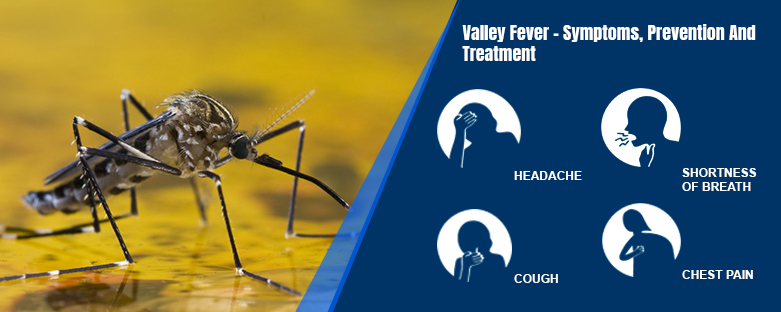What is Valley Fever?
This is a fungal infection caused by coccidioides (Kok-sid-e-OY-Deze) organisms. It can pain in chest, coughing and fever, among other signs and symptoms. Two species of coccidioides fungi cause valley fever. These fungi are commonly found in soil in specific regions. This valley fever does not spread from one person to another person so you do not have to stay at home for that reason.
Who gets Valley fever?
People who live in the southwestern United States or travels to the southwestern United States, or parts of Mexico or South America can get this type of fever. This type of fever can affect any age of people, but mostly in adults who are 65years and older. Some people may be at higher risk for developing the severe forms of this fever, such as:
• People who have weak immune systems, for example:
- People who have AIDS/HIV
- People with diabetes
- People who are taking medications
• Women who are pregnant
Symptoms of Valley fever
Many people who are exposed to the fungus never have symptoms. Other people may have symptoms like flu, including:
- Tiredness
- Coughing
- Fever
- Shortness of breath
- Headache
- Night sweats
- Muscle aches
How can prevent Valley fever?
It is quite difficult to avoid breathing in the fungus Coccidioides in areas where it is a normal environment. People who live in these areas can try to avoid spending time in dusty places. People who are at risk for severe this Valley fever may be able to lower their chances of developing the infection by trying to avoid breathing in the fungal spores.
There are some common-sense methods which can be helpful to avoid getting from this Valley fever. It is important to know these steps:
- Try to avoid dust area like construction sites. If you can’t avoid these areas, wear a face mask when you go on those areas.
- Stay inside during dust storms and keep all the windows shut.
- Try to avoid that activity which involves close contact to dust and also avoid gardening.
- Use air filtration inside your home.
- Clean skin injuries well with water and soap to prevent the chances of developing a skin infection, especially if the wound was exposed to dust.
- Take preventive antifungal medication if your healthcare provider says you need it.
Treatment
Valley fever does not need any type of medical treatment. For people who are otherwise healthy, bed rest and drinking more of fluids. Your doctor will watch how you are doing.
If your symptoms hang on or get worse day by day, then your doctor might advise you a drug which attacks illnesses caused by fungus. There are many options, depending on how severe your symptoms are. In most cases, such as people who develop meningitis, lifelong medication may be necessary.
In many cases, people who have valley fever become immune for the rest of their lives.
Since you cannot spread it to other people, you do not have to stay home for that reason. But it is necessary that get rest until your symptoms are gone.

Leave a Reply
You must be logged in to post a comment.